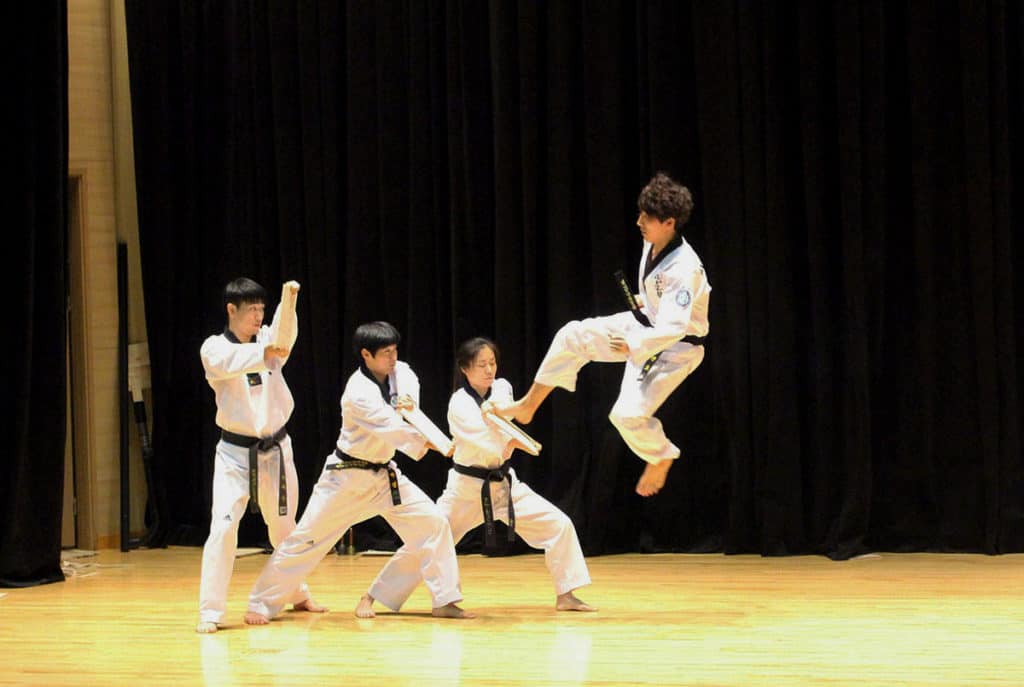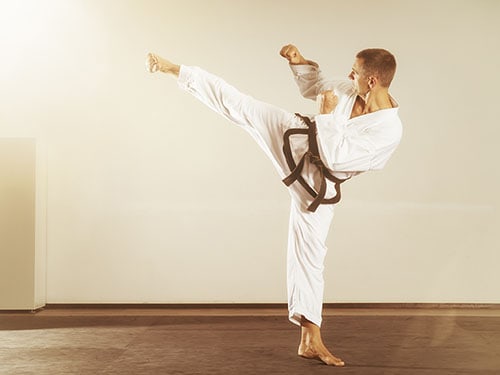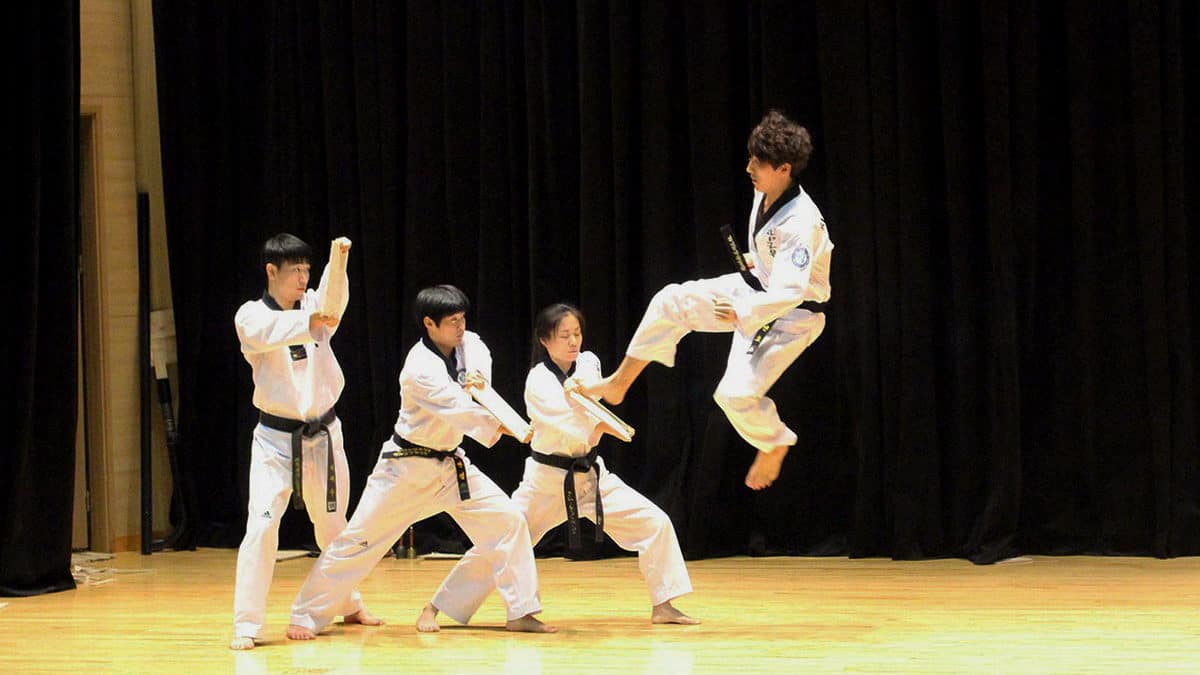
Part of the testing process that one goes through each time they go to move up in rank in TaeKwonDo is the dreaded board breaking. For many this is the most stressful part of the testing process, especially when its your first time and your testing in order to move up in belt rank.
I have to admit, that it was a bit stressful for me when I was testing for the first time and there was a large audience standing around looking at me. I thought that I cannot be the only one that has gone will be going through this so in this post I am going to try to demystify the board breaking process and here is what I found out:
What is the Purpose of Board Breaking in TaeKwonDo?
A brief history on how board breaking came to be is that back in the day, so the story goes, the boards were broken to condition the hands and feet so that they became tougher. They reason for this was that if they found themselves without a weapon against an attacker they needed to be able to defend themselves.
Today, however, the reasons there is board breaking in TaeKwonDo is that, well, its better then the alternative. The alternative being a “live subject” in which to demonstrate the effective of a particular kick (or punch) as these techniques, obviously, can cause server injury and so you wont get many volunteers!.
The boards used in TaeKwonDo testing today are a way to avoid this and at the same time help show ones proficiency in a certain kicking and punching technique and the power that can made with them.
In addition to showing the power these kicking and punching techniques have, it also has the following benefits not only for adults but is especially helpful for kids:
- Developing focus and concentration
- Developing self confidence
- Developing power
- Training feet and hands to tolerate impact
Are TaeKwonDo Boards Easy to Break?
I cannot speak for every TaeKwonDo school and only the one that I go to but the boards we break with are boards made mostly for demonstration purposes and therefore are relatively easy to break. The reason the boards are “easy” to break is because:
- The boards are made from either White or Yellow Pine Wood as opposed to say Oak or other types of hardwood.
- The fibers that make up the pine wood are faced North to South and when you hit the board straight on the it breaks right between the fibers
- There are very few to none knots in the wood
- Pinewood is more forgiving so even though, ideally, you need to hit the board in the center, using the correct technique, with Pinewood, if your a little off center, the board will still break.
What Kind of Wood is Broken in TaeKwonDo?
As I mentioned above Pine Wood is the wood most commonly used in board breaking for Taekwondo due to its softness and if want to be even more specific, then its Number 2 Pine. These boards have been dried out and are practically devoid of any knots.
All though there are no hard and fast rule when it comes to boards for breaking, the general rule of thumb for size and thickness are as follows:
- For those 12 and older : 10 to 12 inches wide and 1 inch thick
- For Kids younger then 7: 3 inches wide and 1/2 inch thick
- For Kids ranges 7 – 12: 5 inches wide and 1/2 inch thick
How to Practice Board Breaking for TaeKwonDo
If you want to practice your board breaking before your test or maybe even for practice there are a couple of ways to do this.
You can buys some re breakable boards from a place like Amazon or you can get the real thing and get pine boards, again, from a place like Amazon that come in packs of nine. I would recommend you go with the re breakables so you practice over and over again and you get almost the same feel as if you were using real pine wood.
Warm Up And Preparation
Before doing any board breaking its imperative that you warm up. You need to get your body ready for what you are going to do and to go in “cold” is only asking to get yourself injured.
Aside from doing calisthenics and stretching you will want to go through a couple of “dry runs” and slowly practice the kick or punch are you going to use for the break.
You can use a heavy bag or kick bag for the pre board breaking practice to work on not only your kicking but also to work on your technique, before moving on to the actual board(s) breaking.
Your TaeKwonDo Assistant

You are going to need an assistant so grab a friend or fellow student, to hold the board(s) since they are going to need to be held firmly in place. If the boards are not held firmly, they ares just not going to be easy to break and this may affect your confidence.
An alternative is to put them on a stationary platform like cinder blocks but, this is really best for hand breaks. In TaeKwonDo, for all the kicking techniques, its going to be better to use an assistant who can hold the boards at various height levels so you can practice at different levels with different types of Kicks.
When having the assistant hold the board, you need to tell them how to hold the board and make sure they know to have their fingers both in the back in the front curled and out of the way.
Also if its their first time holding for you, then you may want to ask them to close their eyes and look away so they don’t know when the kick is coming otherwise they may have tendency to pull back which makes it more difficult to break.
Breaking the Board in TaeKwonDo
When breaking boards, whether with your hand or your feet you need to keep in mind 3 vital points to be able to break the board with effectively and with ease:
1. Focus
When breaking a board You need focus on punching or kicking THROUGH the board and not think the board is the end point. Part of the reason for this is because you will be more incline to hit just the board and stop your momentum at that point.
Now, this may work if you are just hitting one board but as you move up and start being required to break multiple boards you are going to have a more difficult time.
So when practicing, remember hit THROUGH the board. You can even imagine a spot on the other side of the board where you need to hit (just don’t mention this to the assistant!)
2. Concentration
When you go to do your board breaking there is going to be a room full people around watching you.
The most important of these will be your instructor plus perhaps a few guest instructors that may there for testing and grading purposes. So what I am saying is you are going to have alot of distractions around you.
This is why you must tune out everything out around you and concentrate on the board(s) in front of you and the task at hand.
3. Speed
If you just walk up and slowly tap the board with your foot or hand, its just never going to break. You need to add speed to the breaking. By adding speed, you will get the momentum needed behind your kick in order to break the boards.
Board Breaking and Belt Promotion in Taekwondo
Breaking boards gets progressively more difficult, naturally, as you move up in your training and belt rank
Every school seems to handle board breaking a little differently. For example, some schools won’t start board breaking until you get to your blue belt.
The reason for this is until this point, they don’t consider your skill level good enough to break boards and therefore you might injure yourself.
There are other schools, however, and its the majority, that will have you breaking boards from the beginning, when are going from white belt to yellow belt.
At this point though they may use a thinner board so that you can start to get the feel of what its like to break a board as well as give you a confidence boost as I mentioned earlier.
For small kids, though, there is even more ambiguity in regards to when they can test, as the bones in small kids are still maturing and breaking boards, especially multiple boards, can be detrimental.
Bottom line is you will have to ask at your particular school what their policies and procedures are when it comes to board breaking and belt testing.


